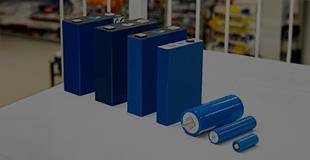

Recycling: Industry-Level Responsibility for Waste Disposal
The European Battery Regulation has made the recycling and recovery of lithium battery materials a duty for the entire battery value chain.
From manufacturers to importers, all parties involved in selling batteries in Europe are responsible for their recycling. They must adhere strictly to the guidelines and standards established by the Regulation.

Structure and Composition of Lithium Batteries
To truly understand how end-of-life lithium battery recycling and recovery processes work and how they can be optimised, it’s essential to grasp the internal structure of one of the battery’s key components: the cell.
Every lithium cell is composed of:
Two electrodes:
- Cathode (positive pole). An aluminium sheet coated with cathodic material, such as NMC (Nickel Manganese Cobalt), LFP (Lithium Iron Phosphate), LTO (Lithium Titanate) or others.
- Anode (negative pole). A copper sheet coated with anodic material, usually composed of carbon or graphite.
Separator: a material, usually ceramic or polymer, placed between the two electrodes, acting as an insulator.
Electrolyte: an organic liquid containing lithium salt that fills the remaining volume in the cell and enables the intercalation of ions between the anode and cathode.
Despite having an exceptionally long life, lithium cells do degrade. Given the number of valuable materials they contain, setting up an appropriate recycling process for their components is not only an ethical action but also a genuine resource.

Lithium Battery Recycling Technologies
Properly recycling lithium batteries not only reduces the environmental impact of the growing demand for electric vehicles but also makes it possible to recover valuable metals and components like copper, aluminium, lithium, cobalt, and manganese. This process generates resources and offsets the scarcity of minerals.
Various recycling processes exist today, which can be either physical or chemical, depending on the methods used to extract and separate battery materials. These processes include several phases. Regardless of the method used, the goal is the same: the more sorted and precise the starting material’s chemistry, the more efficient the recycling process will be.
This is why producers play a crucial role in considering the end-of-life stage during the design process, optimising production steps and creating batteries that are easy to disassemble and contain increasingly eco-friendly materials
Second-Life Lithium Batteries: Reconditioning May Not Be the Most Efficient Choice
Studies are increasingly exploring the possibility of giving lithium batteries a second life by reusing them in applications like energy storage after their use in electric vehicles has ended. While this practice is intriguing, it might not be the best choice for the future.
For example, automotive batteries need to be replaced when they lose about 20% of their initial capacity to avoid reducing the vehicle’s overall performance. These batteries still have some usable life left and can be employed in storage systems.
Yet, recent years have seen major cell manufacturers introducing a minimum remaining state of health (SOH), typically set at 70%, within which cells can be safely reused.
Considering the rapid technological advancements in batteries, the higher risks associated with using low-SOH batteries, and the high recycling rates achievable (> 96%), the future is likely to favour using materials from recycled cells to create new batteries with enhanced performance and safety, than adopt second life practices.










